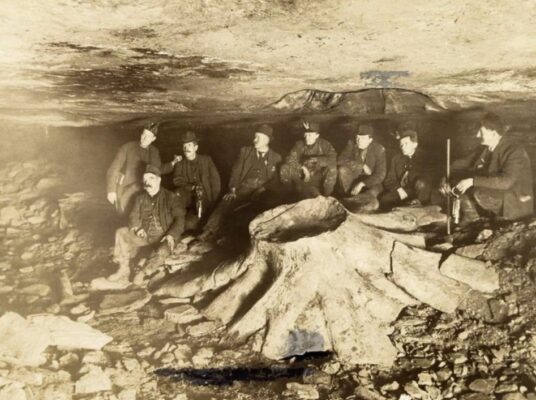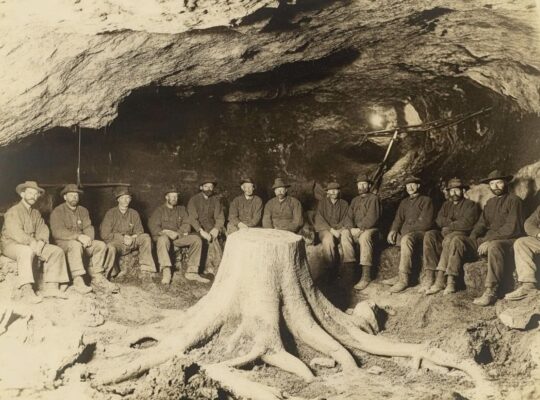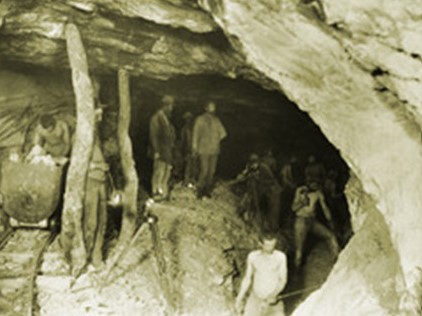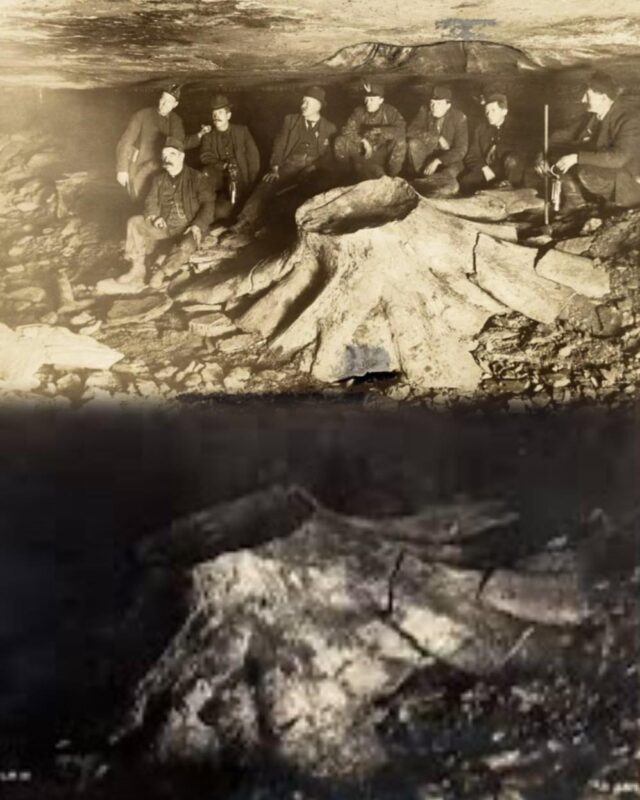In 1918, coal miners made one of the most incredible discoveries in geological history—a perfectly petrified tree stump found buried within a coal seam. This extraordinary find has baffled scientists and enthusiasts alike, offering a rare glimpse into Earth’s ancient past. This article delves into the significance of this discovery, its implications for geology, and why it continues to fascinate us today. Follow archeology.dulichvn.net to discover many hidden mysteries that have yet to be discovered.

The Significance of The Petrified Tree Stump
A Window into Ancient Earth
The discovery of the petrified tree stump provided scientists with an unexpected window into Earth’s distant past. The presence of the stump within the coal seam indicated that the forest where it originated was much older than the coal itself, offering an insight into the geological layers and natural processes that have shaped our planet.
A Link Between Ancient Forests and Coal Formation
Scientists have long studied the origins of coal seams and their connection to ancient forests. The discovery of a petrified stump within a coal seam solidified the theory that coal is formed from the remains of ancient plant life. This discovery also suggested that these forests were once part of a much larger and diverse ecosystem.

Geological and Historical Implications
The Timeframe of the Discovery
The petrified tree stump discovered in 1918 is believed to have been around 300 million years old. This places the stump during the Carboniferous Period, a time when vast swamps and forests flourished, and plant life played a key role in shaping the Earth’s atmosphere. Understanding the timeframe and conditions of this discovery helped scientists gain a better understanding of Earth’s early history.
Preserving Earth’s Ancient Life
The fact that a tree stump could remain intact and perfectly preserved for millions of years is a testament to the petrification process. This rare preservation allows us to see and study ancient life forms that would have otherwise been lost to time. It also provides valuable information for understanding the evolution of plant life and its role in shaping the environment.
The Ongoing Fascination with the Discovery
Even after more than a century, the discovery of the petrified tree stump continues to intrigue and inspire geologists, historians, and nature lovers around the world. It serves as a reminder of the mysteries that lie hidden beneath the Earth’s surface, waiting to be uncovered. This remarkable find continues to be a symbol of the Earth’s ancient past and the incredible processes that have preserved its history for generations to come.
A Legacy of Discovery
This discovery in 1918 has contributed to a greater understanding of Earth’s geological history, and it remains one of the most fascinating and enigmatic finds in the field of paleontology. As scientists continue to study and uncover similar finds, we are constantly reminded of the vast and awe-inspiring natural world that existed long before humans.

See more: The Kingdom of Kush: History and Civilization of Ancient Nubia
Conclusion: A Discovery That Keeps Giving
The petrified tree stump found in 1918 is more than just an ancient relic; it’s a symbol of the incredible discoveries that continue to shape our understanding of Earth’s history. As we continue to explore the mysteries of our planet, discoveries like these help bridge the gap between the distant past and the present, reminding us of the ever-changing and evolving nature of life on Earth.
This discovery is a testament to the perseverance of scientists and enthusiasts who seek to understand the world we live in and the mysteries it holds. The petrified tree stump will forever remain a unique and invaluable piece of Earth’s ancient story.


CÁC TIN KHÁC
Mary Walton: The Forgotten Inventor Who Helped Clean Up America’s Cities
Tomb of Queen Nefertari in the Valley of the Queens, Egypt
Discover the Hypostyle Hall of the Temple of Hathor at Dendera
Venus de Losange: Unveiling the Mystery of a 20,000-Year-Old Paleolithic Icon